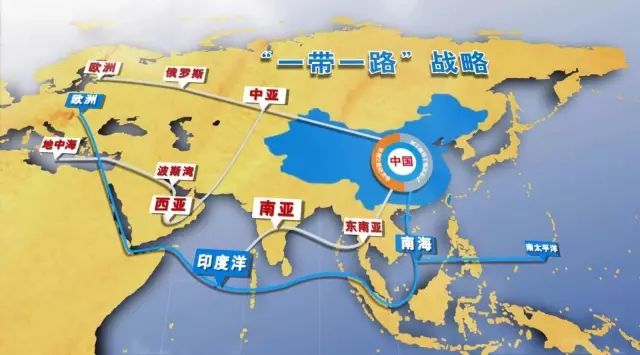Belt and Road
Your Present Location: PROGRAMS> Belt and RoadWang Yiwei: The trap of BRI debt trap
By Wang Yiwei Source: CGTN Published: 2019-3-11
"Give a man a fish and he eats for one day. Teach a man how to fish and he can eat forever." It's a common saying and underpins much of the Western foreign aid budget.
"Give a man a chicken and he has a choice. He can make chicken soup, or he can save the chicken, collect the eggs, raise more chickens, have more eggs and also have chicken soup." It's a very different way of thinking because it emphasizes the way a skill, or product, or asset is used. It comes from a Chinese proverb and in many ways is a good description of the philosophy underpinning the Belt and Road Initiative.
The Belt and Road Initiative (BRI) is not about infrastructure per se, is about the enabling impact of infrastructure and the way it enables economic growth and independence.
The closest analogy is the way railways not only opened up the West in the United States but they also enabled the growth of towns and industries along the rail line that also depended on the rail line.
The same applies to the Mombasa to Nairobi railway line in more recent times. The line has enabled many developments in mining, in services and the pastoral industry that were not possible until the rail line was completed. The line itself may not be profitable, but the industries and economic growth enabled by the line all make a profitable and economic contribution.
The development of BRI infrastructure is about much more than just the hard infrastructure of roads and bridges. It's what this infrastructure enables that is significant. BRI seeks co-operation and support makes for a better economic environment. Just like Confucius said, “If one wishes to stand on one's own feet, one must help others to stand on their own feet; if one wishes to succeed, one must help others to succeed.”
In a Western sense this is characterized as co-petition as distinct from competition. Competition is where the winner takes all and it's a model favored by Western society. Co-petition is where all can win to a greater or lesser degree in an expanding market. Co-petition was a term coined at the turn of the century in Silicon Valley to describe the way the eco-system worked together to improve software, operating systems and hardware.
BRI takes a similar philosophical approach and this makes the infrastructure build a long term opportunity rather than a threat.
Debt imperialism! The Western media has given the Belt and Road Initiative a new name. This label seems to have come about after more than 86 countries and international organizations signed the 102 Memorandum Of Understanding with the Chinese government to jointly build BRI projects, but some Western companies feel they do not have enough access to BRI projects.
CNN published an article titled “China's global trade plan is piling huge debt on smaller nations” on March 5, 2018 citing data from a research paper of the Center for Development, claiming that infrastructure investment under China's Belt and Road Initiative will bring debt burdens to developing countries involved.
So could these fears be correct and could the "Belt and Road Initiative introduce new debt vulnerabilities in developing countries?"
Such a question is just like the "chicken and the egg" dilemma.
The misgiving reminds us that we should not just think about whether the hen can be sold to pay off any debt but also think about how many eggs the hen will lay.
In the early days of its reform and opening up, China borrowed from the World Bank and Asia Development Bank. The West was worried about a possible debt crisis, but it never happened when China's economy took off. We should not take a narrow view on debt, as a certain level of debt can have positive externalities and the Belt and Road Initiative is aimed at building industrial capacity rather than infrastructure only.
China has invested 200 million yuan in every kilometer of its high-speed railways, totaling 6 trillion yuan in its 30,000 high-speed railways. The ensuing debt, instead of skyrocketing, has boosted rapid development and integration of China's economy.
China is sharing its successful experience with BRI countries. One of the key phrases to understand China's model is "development financing.” Learning from the World Bank and Asian Development Bank, the China Development Bank creates a model of market cultivation to deal with market failure.

“If you want to get rich, build the road; if you want to get rich quickly, build the motor road; if you want to get rich immediately, build the Internet road; if you want to get rich jointly, build the road connecting with China.” Such a slogan has encouraged many developing countries to join BRI.
"From the common sense, only those who need money are willing to borrow; from the credit side, only when the relationship is good and the funds are safe, they are willing to borrow. The third party is always worried about the borrowing and lending, I don't think it is necessary," Qian Keming, the vice-minister of commerce said in responding to a Hong Kong reporter's question on the so-called "debt pressure" of the BRI at Saturday's press conference.
Qian Keming also pointed out that a large number of cooperative projects have been launched, which has effectively promoted the economic and social development of the countries concerned and brought tangible benefits to the local ordinary people since it has been launched more than five years ago. It has been widely welcomed. These achievements are obvious to all. Therefore, the view that the "Belt and Road" Initiative is only benefiting China ignores the facts and is simply untenable.
Wang Yiwei is a senior fellow from Chongyang Institute for Financial Studies at Renmin University of China.























































































 京公网安备 11010802037854号
京公网安备 11010802037854号





